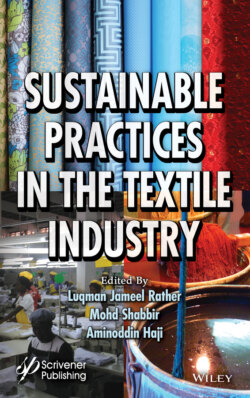Читать книгу Sustainable Practices in the Textile Industry - Группа авторов - Страница 37
1.11.2 Color Fastness Properties
ОглавлениеColorfastness can be defined as a property of any dyed textile material to retain its original color without fading, changing or running during washing, wetting, cleaning, exposure to light, heat or any influences. The color fastness standards or protocol generally used by the American Association of Textile Chemists and Colorists (AATCC) and the International Organization for Standardization (ISO). After testing, the color of the sample is compared by “Gray Scale for Color Change” and a “Gray Scale for Staining’’. Color Fastness uses a rating system from1 to 5, where 5 indicate excellent and 1 shows very poor results. The main color fastness tests are as follows:
1 Colorfastness to Washing: the ability of dye to resist during washing of fabric called washing fastness.
2 Colorfastness to Light: light fastness is resistance of dye during the exposure to light or heat.
3 Colorfastness to Rubbing: the ability to sustain original color of dyed fabrics by abrasion or rubbing.
4 Colorfastness to Perspiration: the ability to not fade when dyed fabric is perspired.
Natural sources provide a large range of color with various shades on textile materials. To use dyed material every day, the color should remain on the fabric in any situation. Therefore, researchers and scientists attempted several trials and found very good results for fastness [102, 103].
